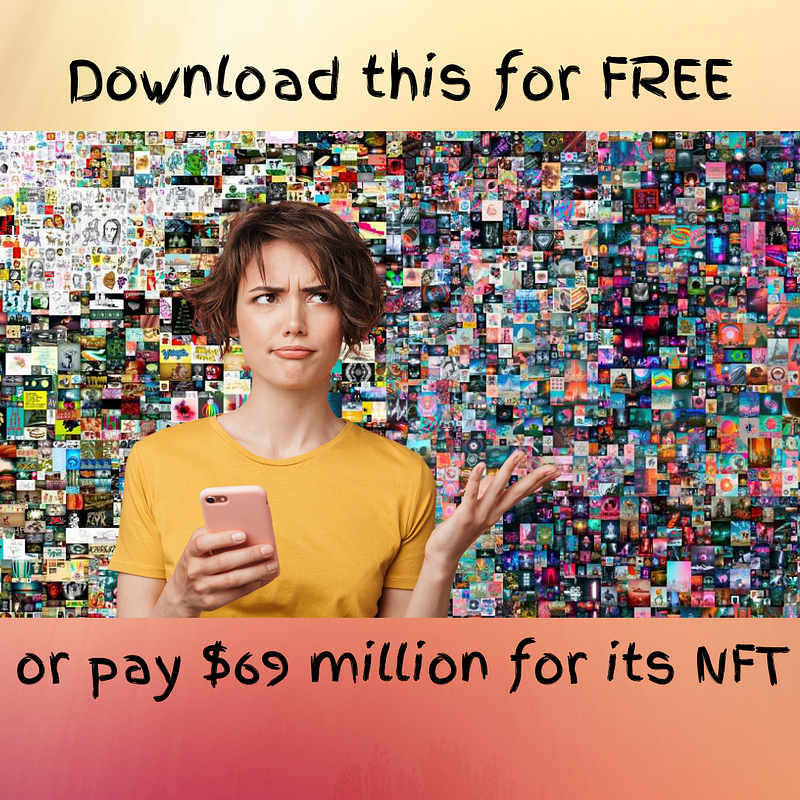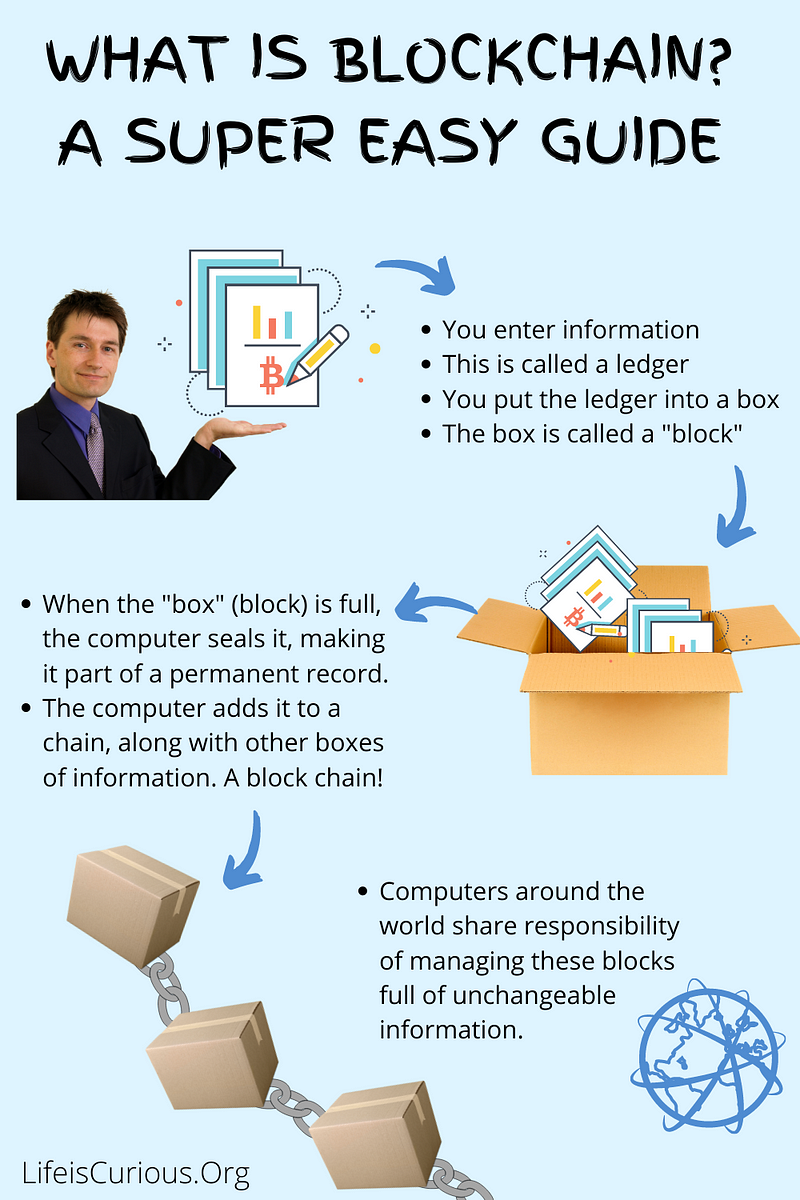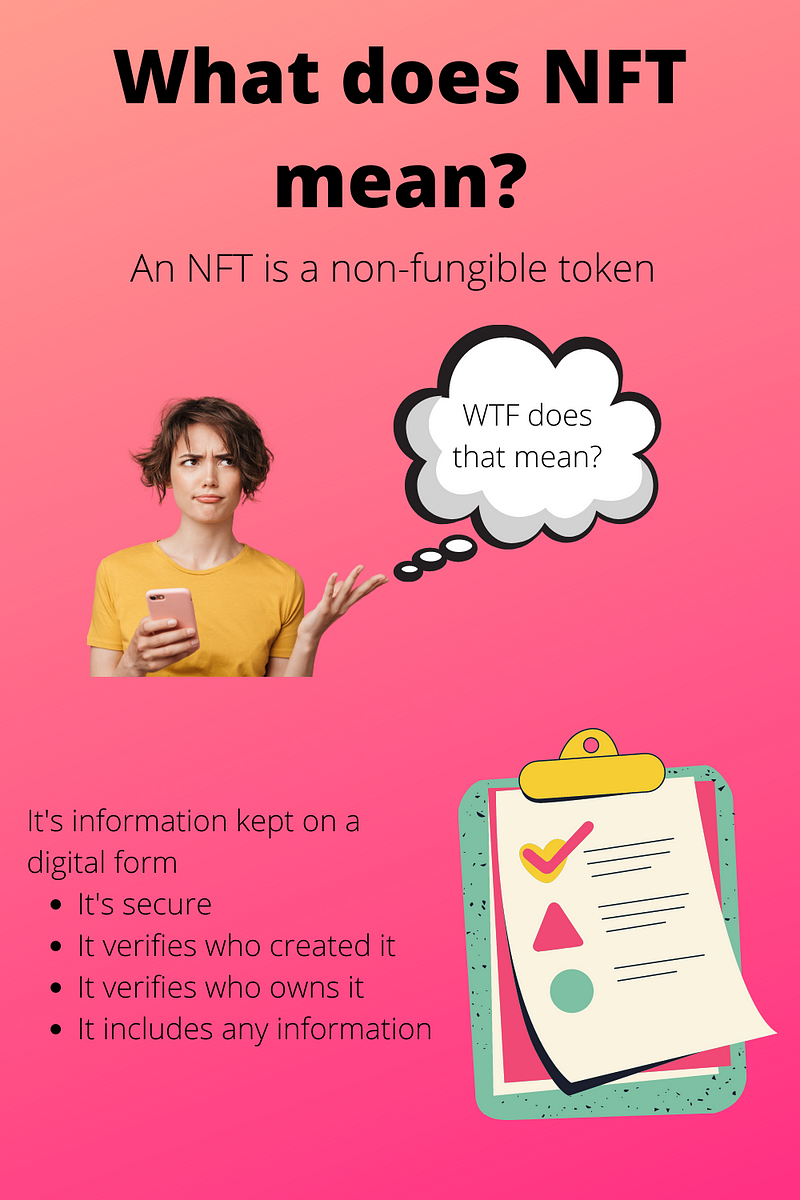Understanding the $69 Million NFT: What Does It Mean?
Written on
Chapter 1: The Intriguing World of NFTs
Have you ever considered that the image you see below is just a collage, yet someone was willing to pay a staggering $69 million for it? This hefty price tag wasn't for a physical copy, but for a non-fungible token (NFT). So, what exactly is an NFT?

It's amusing to think about, isn't it? Just right-click and save the image above, and you have a copy for free. Yet, a collector paid millions for the NFT version. Let's delve deeper into this perplexing concept.
Section 1.1: The Nature of NFTs
People are now investing in digital memes. For instance, someone recently purchased the famous neon cat meme as an NFT for $600,000. Yes, the same meme you can easily download for free!
Would you ever consider spending that much on an NFT of a meme? The term NFT stands for "non-fungible token." But what does that entail?
- It signifies verified ownership of an original digital artwork.
- The authenticity of the artwork cannot be forged or replicated.
- If the artwork changes hands, the original artist receives a share of the profits from all subsequent sales.
Subsection 1.1.1: Simplifying NFTs
To grasp the essence of NFTs, we need to briefly discuss blockchain technology. Essentially, a blockchain is a secure database that records information chronologically and is immutable. Think of it as stacking sealed boxes of information.

The data stored on the blockchain is safe and accessible to anyone with internet access. This is where cryptocurrencies like Bitcoin operate. Bitcoin has a capped supply, with only 21 million in existence, ensuring its value through scarcity and security.
So, what distinguishes an NFT from a Bitcoin?
An NFT is a unique piece of digital content—art, music, videos, or GIFs—recorded on a blockchain. Unlike Bitcoin, which can be traded, NFTs are not interchangeable. They exist on a platform called Ethereum, using a currency known as Ether.
In essence, NFTs are digital representations of original works, capturing:
- What the item is
- Who created it
- Who currently owns it
Section 1.2: Ownership and Value in the Digital Realm
An NFT provides verified ownership of a digital item, similar to how the Mona Lisa exists as a singular masterpiece. While anyone can access a copy online, owning the original is what truly matters.
For example, the band Kings of Leon released their latest album as an NFT, which includes exclusive concert tickets and a limited-edition vinyl. This demonstrates that NFTs can also authenticate ownership of physical items, akin to a vehicle's registration.

NFTs can serve various purposes beyond art, including digital car registrations, simplifying the transfer of ownership and verifying authenticity. They empower artists by ensuring they earn royalties every time their work is resold.
Chapter 2: The Investment Landscape and Environmental Concerns
In this video, Beeple discusses his journey in digital art and the astounding $69 million sale of his NFT, shedding light on the motivations behind such purchases.
This video explores the factors that led to the unprecedented sale of Beeple's NFT at Christie's, offering insights into the valuation of digital art.
The environmental impact of NFTs is a pressing issue. The process requires substantial computational power to maintain the security and integrity of the blockchain, which has raised concerns about its ecological footprint.
While NFTs present exciting opportunities for ownership and investment, potential buyers should consider the environmental implications and explore more sustainable investment avenues.
As the digital art landscape evolves, the question remains: Is it wise to invest in NFTs, or are there more fruitful options available?